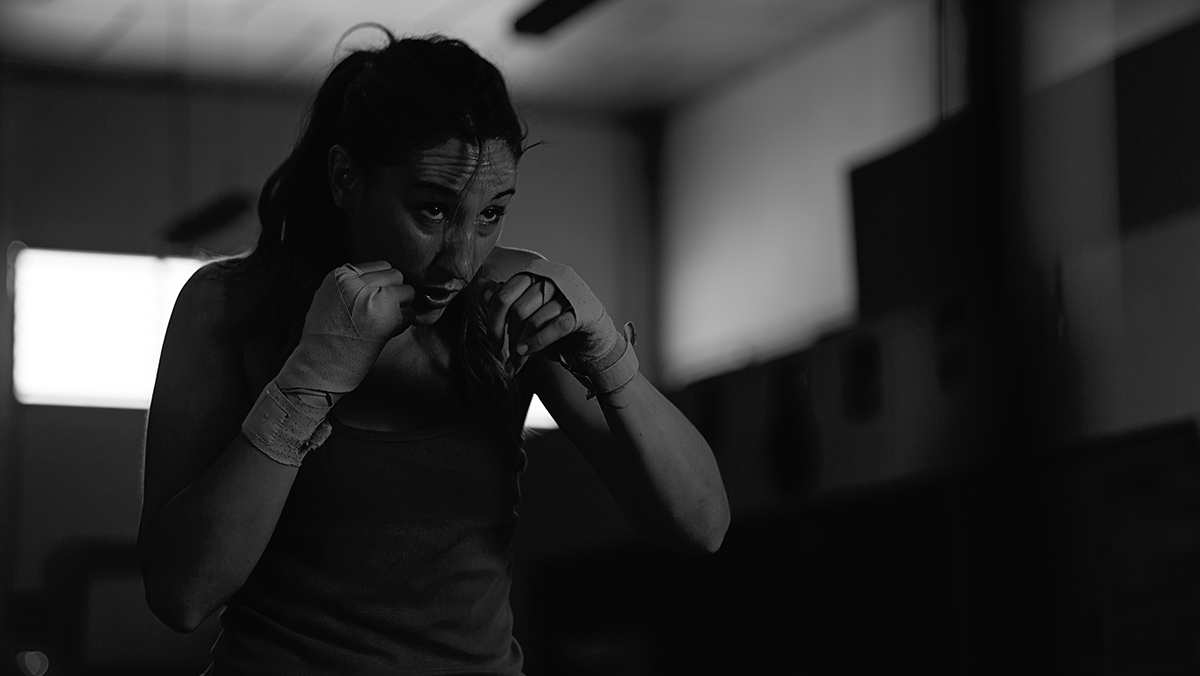
This is the fifth installment in a series which unpacks the psychological profiles that explain consumer behavior. Specifically, the four drivers of behavior, and the five barriers that hinder consumer decision-making. These factors are based on a wealth of neuroscience knowledge from the world of academia, combined with over a decade of application in the brand-building world.
Think back to a long, long time ago, in a distant cave. A group of early humans is huddled around a fire, eating what they’ve hunted, foraged, or perhaps taken from another tribe. Survival of the fittest rules the land, and it often comes down to either take, or be taken-from. When food is available, you’d better eat – and lots of it – as you never know when your next meal will be. And so on.
Fast forward to the current day. Obviously social structures have evolved considerably, and thankfully the harshest of survival realities are far less prominent in everyday life. And yet, while the context has certainly changed, the mental hard-wiring remains more-or-less intact. We humans remain – at least deep in our subconscious – motivated to acquire advantages and resources ahead of our peers. And while it’s one of the less flattering facets of human nature, it’s driven by the very natural and pervasive evolutionary mandate to ensure our DNA thrive and proliferate.
So what? Well, this isn’t something a person can (or would if they could) volunteer in an ethnographic interview. Or a survey. Or a social media post. This instinctual compulsion is deep in the subconscious, so we don’t even recognize it in our own behavior and decision-making. And yet, it’s surely there, wielding influence from behind the cognitive curtain.
Looking at the implications from the modern perspective, this ‘Instinctual’ driver is deeply ingrained within the ways consumers navigate the world, attribute attention, and create meaning – in other words, the things we notice and buy. And while this instinctual ‘muscle’ does not overpower our more conscious, rational mental lenses universally, it can rise to the fore in everyday contexts, explaining and predicting behavior.
First the obvious:
- Someone cuts you off in traffic.
- A friend offers you a piece of really delicious-looking cake.
- A coworker eats the leftover pizza slice you labeled in the fridge.
Any of these will obviously trigger your inner cave-brain, causing you to react in instinctual, impulsive, and perhaps even illogical ways (I once put a co-worker on blast for using my coffee mug, then later felt real embarrassed about it).
But what about more mundane consumer product categories and behaviors like:
- What to have for dinner.
- What kind of baby food to buy.
- What brand of beverage to drink.
When the instinctual driver is in-play, these decisions can look something like:
For dinner: I’ll choose something premium that lets me post on Insta and out-alpha the dinner my peers managed to put on the table.
For baby food: I’ll choose a brand that positions and activates around helping my baby walk, talk, self-feed, and generally develop faster than her peers.
For beverage: I’ll choose the brand that lets me blow off a little steam, and feel better right now.
A few notes about the examples above… logical considerations, like how much something costs or how easy it will be, really don’t enter the picture. Or, at least, don’t drive foundational decision-making. And yet marketers fall victim to these highly practical considerations again and again.
But in this mental state, facts and figures need not apply. The brain is in see, want, do mode. So strategies need to focus less on price, calories, ease, convenience, or other familiar marketing program trappings and pursue winning. Or rather, empower the consumer to win and stand out from the pack via gut instinct and satisfying impulses.
While this instinctual driver can explain behavior across contexts (we’ve even seen it present in decision-making about seemingly uber-practical things like insurance policies), the realm of food and beverage provide an excellent platform with which to observe this driver in action.
And the fast casual chain Panda Express has recently put on a near master-class in serving this driver with the launch of their new Sizzling Shrimp entrée. Assuming the guest that Panda Express is seeking to lure is indeed motivated by this instinctual driver, let’s look at what they’re doing oh-so-right.
Smart move 1: Pictures > words, video > pictures
When a person’s brain is in this state – this system 1, cave-dweller, see, want, do mode – words and numbers become essentially meaningless. Imagery that enables the consumer to effortlessly imagine what the experience will feel like steer the mental ship (which steers the physical ship).
Panda’s use of highly engaging visuals in this example outdoor campaign is really strong. Motion, imperfection, and even a bit of fear (is that shrimp going to go flying out of the wok?!?) are cognitive gold to a passerby who finds herself in this instinctual state, and would have a tough time steering clear of an upcoming Panda Express location.
Were I to advise the Panda team, I’d simply challenge them to reduce the already-limited text. For example, the first board could simply be the food (no words required) with the second ‘challenging’ the consumer to discover the sizzle. These kinds of moves are tough when it comes to real-life campaigns (surely we need to SAY things to the consumer!), but there’s some absolution in knowing their instinctual brain doesn’t even register the words, anyway.
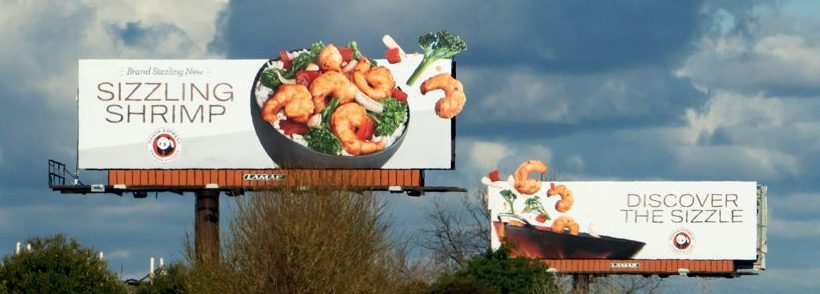
Smart move 2: Scare them (just a little)
Remember the analogy about ancient times above? The fear, the threat, the necessary vigilance to survive? Those same instincts are at play, and much of what Panda is doing serves them beautifully.
Consider this gif:
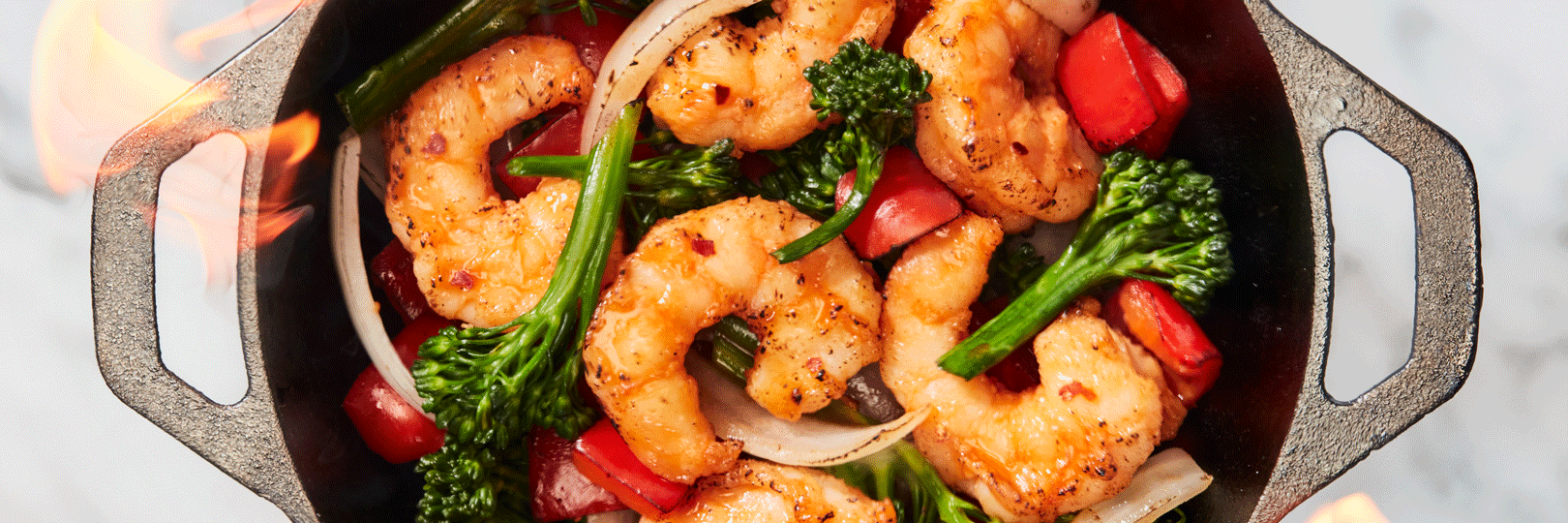
Did you flinch, fall out of your chair, or shriek with fear? Probably not. Your brain, and its near-instantaneous visual processing of this imagery knows that this can’t hurt you. It’s on a screen – not real-life fire leaping forward to burn you.
However, within that near-instantaneous processing, your brain also considered that this could, in fact, be a threat. And in considering that, the brain sat-up in its figurative chair for a second (nano-second, actually) and paid attention. We call this the roller-coaster effect: that which doesn’t kill us, but pretends to, is exhilarating.
Now consider this image:
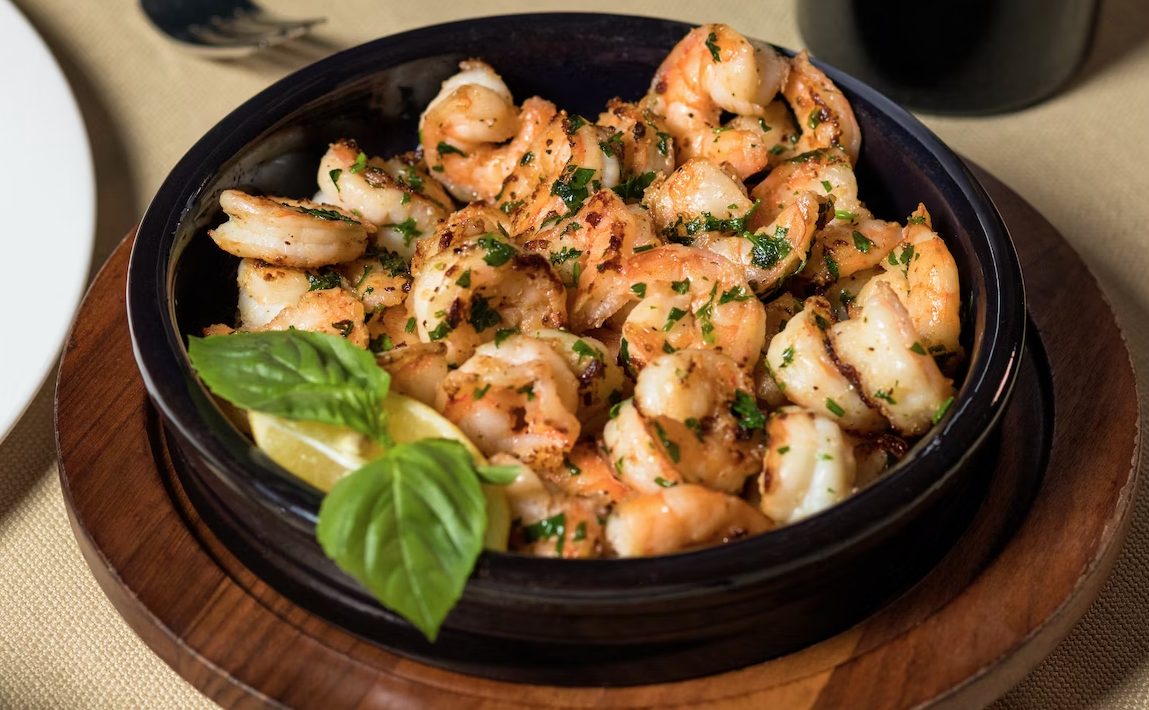
Also a shrimp dish, and a delicious-looking one, too. But it’s perfectly ‘safe.’ Your brain needs not consider whether any elements of this may, in fact, be a threat. Much easier to ignore and skip over to the next nano-second of visual processing.
The lesson? The instinctual brain likes to be scared – just a little. Leverage this in your content and communication.
Smart move 3: Let them win
This instinctual driver has a decidedly social component. Much like cave-days of old, it compels a person not to simply align with the social tribe, but to emerge as the boss of it. This manifests even in the seemingly mundane context of procuring dinner for the household – an occasion Panda Express would surely like to win.
After all, look to any restaurant or delivery app – the attempt to win the day on group orders is pervasive. But Panda’s activation remembers that, before the consumer can order the family meal (see menu board below), they must serve their own innate instinctual need first.
So rather than opening with “Make it a meal!”, “Family favorites to go!” or another familiar attempt to feed the tribe, their activation lets the consumer discover something new (in this case, the sensorially evocative “sizzle”) – which they’ll THEN be compelled to introduce to their tribe (in the form of said Family Meal).
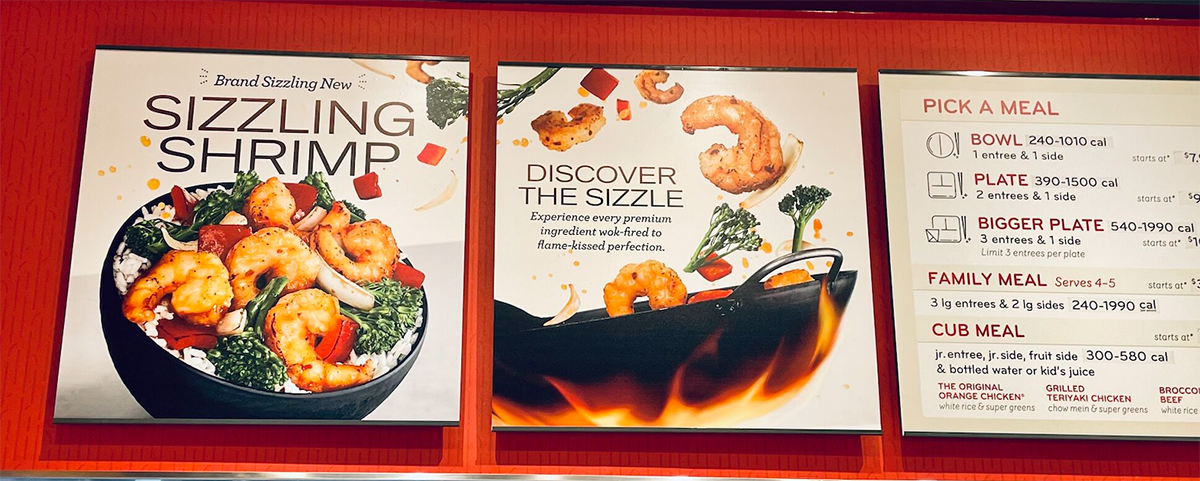
This equation grants the consumer social credit – cementing their spot as the bold, adventuresome, and otherwise genetically competent figure their instinctual brain craves to be.
So as you venture into the crowded world of consumer marketing, and struggle to elbow your way into a bit of precious consumer attention amidst all the noise, remember that oftentimes the route to being really, really good is to be just a little bit bad first.
Cover image source: Click_and_photo